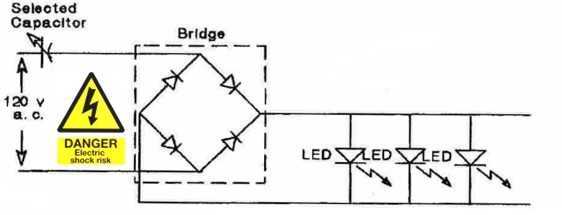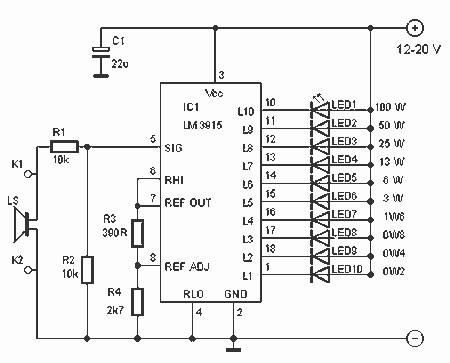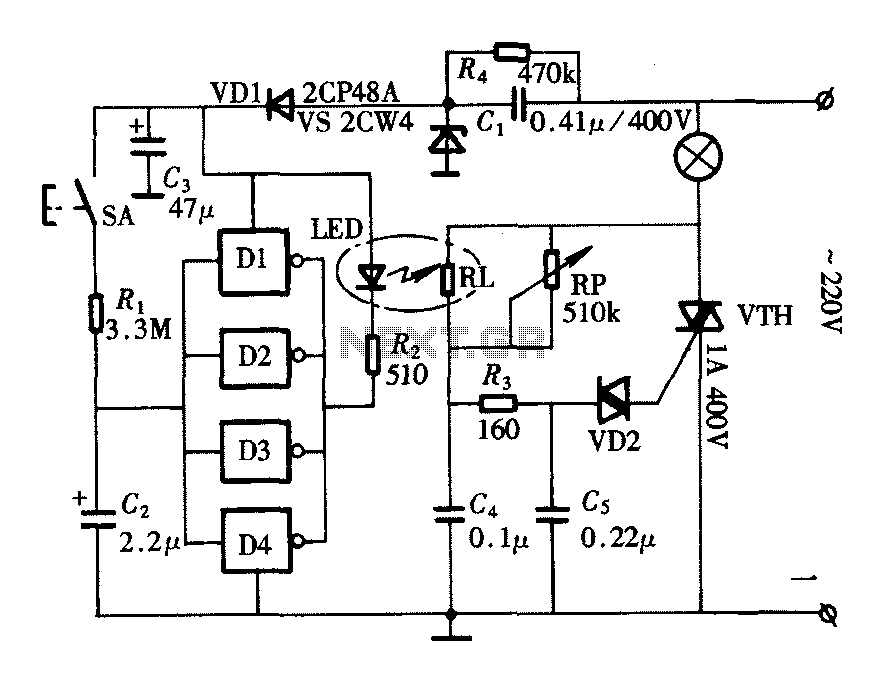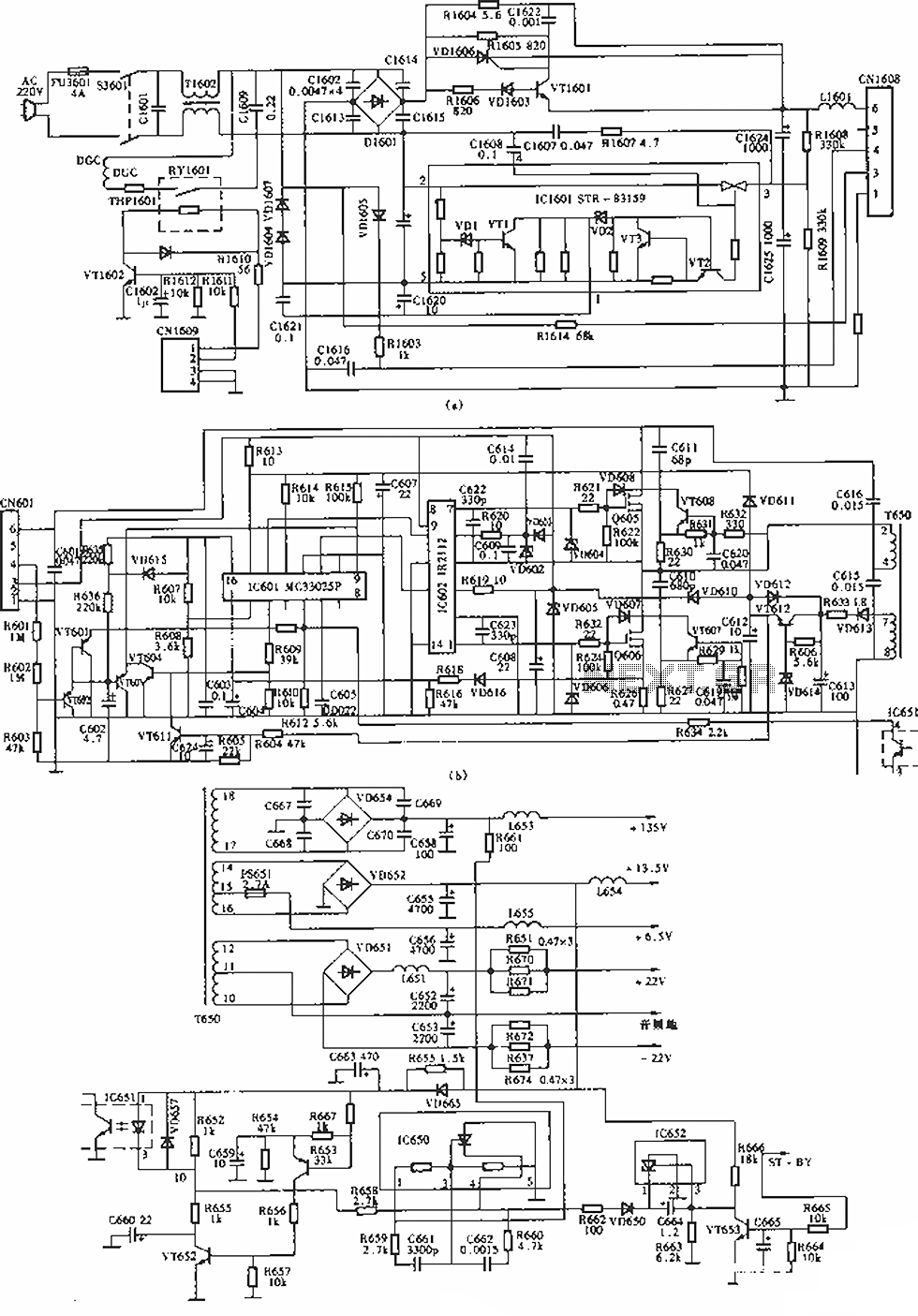
Dual Polarity Power Supply
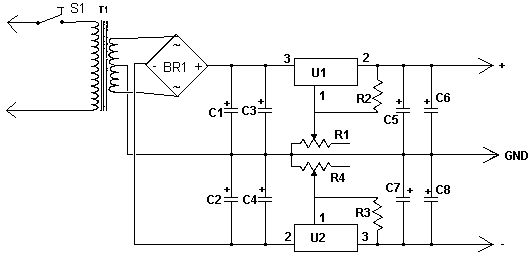
This dual polarity power supply is easy to build, requires few parts, and is adjustable from 0-15 volts. It is great for powering op amp circuits, as well as other circuits that require a dual supply voltage.
The described dual polarity power supply circuit is designed to provide both positive and negative voltage outputs, adjustable within a range of 0 to 15 volts. This feature is particularly advantageous for applications involving operational amplifiers (op-amps) and other electronic circuits that necessitate dual supply voltages for optimal performance.
The circuit typically consists of a transformer, rectifier, voltage regulator, and a few passive components such as resistors and capacitors. The transformer steps down the AC voltage from the mains supply to a lower AC voltage suitable for the desired output. A center-tapped transformer is often used, allowing for the generation of both positive and negative voltages relative to a common ground.
After the transformer, the AC voltage is fed into a bridge rectifier configuration, which converts the AC voltage to pulsating DC. The bridge rectifier consists of four diodes arranged in a specific manner to ensure that current flows in the correct direction, regardless of the AC waveform's polarity. The output from the rectifier will be a pulsating DC voltage that still requires smoothing.
To smooth the output voltage, large electrolytic capacitors are employed to filter out the ripple voltage, resulting in a more stable DC output. Following this, voltage regulators are utilized to ensure that the output voltage remains constant and adjustable. Commonly used voltage regulators for this purpose include the LM7815 for the positive output and LM7915 for the negative output, which can be adjusted by varying the resistance in a feedback loop.
Additional components such as heat sinks may be necessary to dissipate heat generated by the voltage regulators during operation, ensuring reliability and longevity of the circuit. Furthermore, it is essential to include bypass capacitors close to the voltage regulator pins to improve transient response and stability.
This dual polarity power supply circuit is ideal for laboratory use and prototyping, providing a versatile solution for various electronic projects that require stable dual voltage supplies.This dual polarity power supply is easy to build, requires few parts, and is adjustable from 0-15 volts. It is great for powering op amp circuits, as well as other circuits that require a dual supply voltage.
🔗 External reference
The described dual polarity power supply circuit is designed to provide both positive and negative voltage outputs, adjustable within a range of 0 to 15 volts. This feature is particularly advantageous for applications involving operational amplifiers (op-amps) and other electronic circuits that necessitate dual supply voltages for optimal performance.
The circuit typically consists of a transformer, rectifier, voltage regulator, and a few passive components such as resistors and capacitors. The transformer steps down the AC voltage from the mains supply to a lower AC voltage suitable for the desired output. A center-tapped transformer is often used, allowing for the generation of both positive and negative voltages relative to a common ground.
After the transformer, the AC voltage is fed into a bridge rectifier configuration, which converts the AC voltage to pulsating DC. The bridge rectifier consists of four diodes arranged in a specific manner to ensure that current flows in the correct direction, regardless of the AC waveform's polarity. The output from the rectifier will be a pulsating DC voltage that still requires smoothing.
To smooth the output voltage, large electrolytic capacitors are employed to filter out the ripple voltage, resulting in a more stable DC output. Following this, voltage regulators are utilized to ensure that the output voltage remains constant and adjustable. Commonly used voltage regulators for this purpose include the LM7815 for the positive output and LM7915 for the negative output, which can be adjusted by varying the resistance in a feedback loop.
Additional components such as heat sinks may be necessary to dissipate heat generated by the voltage regulators during operation, ensuring reliability and longevity of the circuit. Furthermore, it is essential to include bypass capacitors close to the voltage regulator pins to improve transient response and stability.
This dual polarity power supply circuit is ideal for laboratory use and prototyping, providing a versatile solution for various electronic projects that require stable dual voltage supplies.This dual polarity power supply is easy to build, requires few parts, and is adjustable from 0-15 volts. It is great for powering op amp circuits, as well as other circuits that require a dual supply voltage.
🔗 External reference
